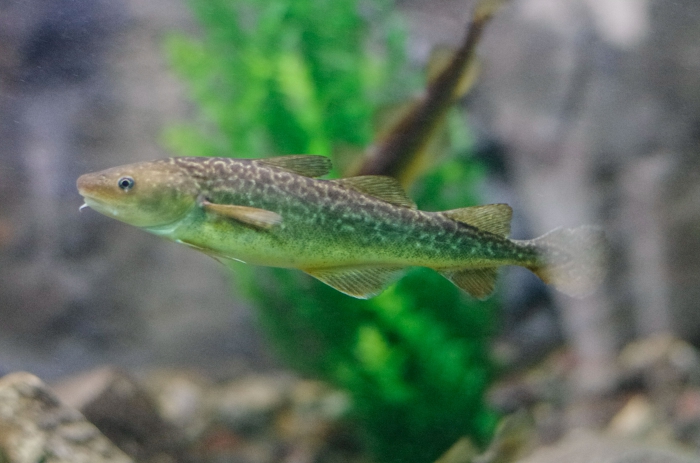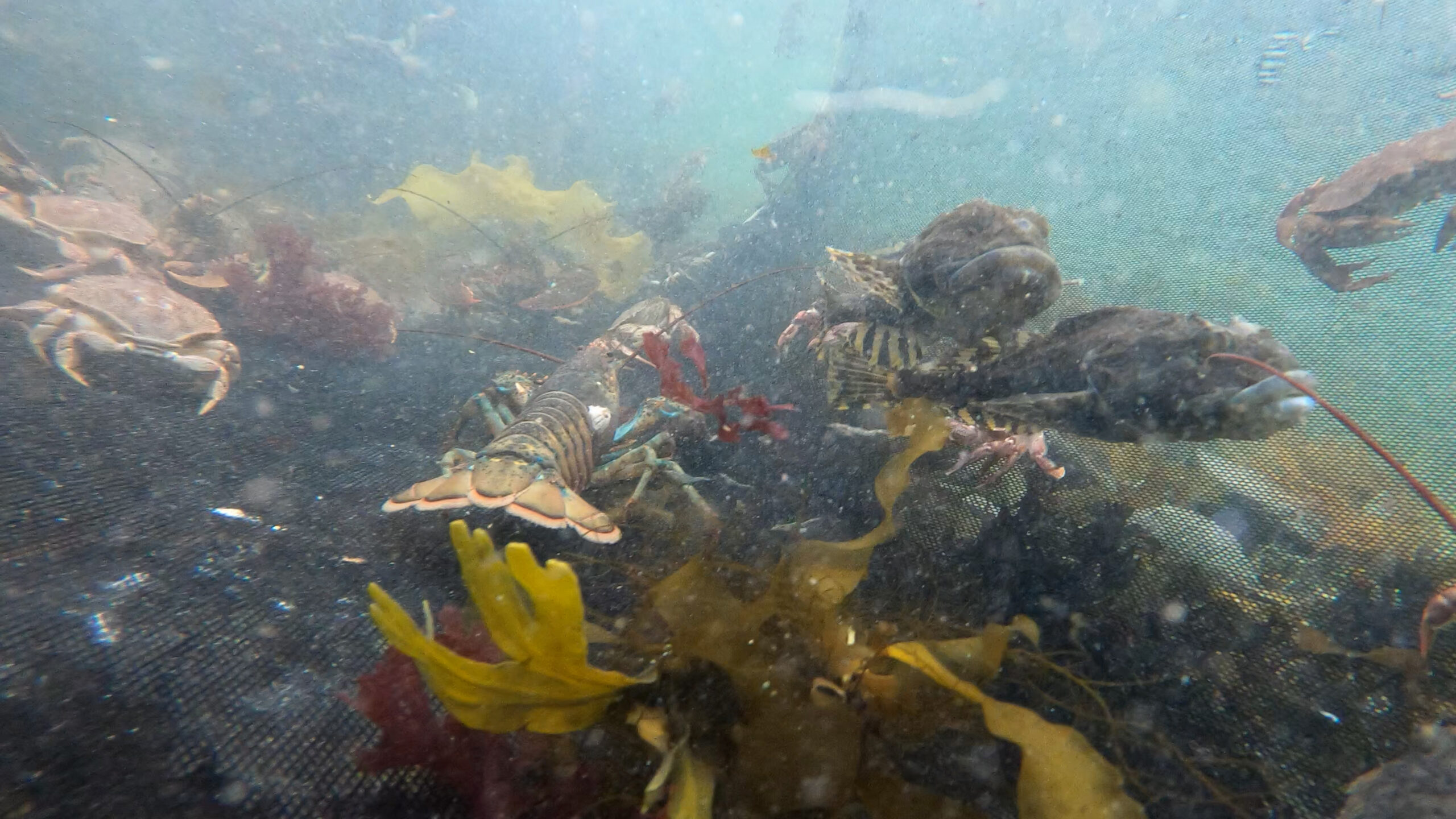
SIZE:
16 to 25 cm, up to 45 cm.
LIFE EXPECTANCY:
Up to 6 years.
LIFE CYCLE:
Sexual maturity at 2 years.
Spawning takes place in fresh water, below the ice, from mid-December to the end of January. The female lays between 6,000 and 65,000 eggs at the foot of rapids, on a sand or gravel bottom. The eggs hatch one to two months later, depending on the temperature. The fry settle in the brackish waters of coastal rivers for a few months before joining the adults in the open sea.
The Atlantic tomcod has a long body, which is brown and dotted with darker patches of yellow or green. Its belly is yellowish white to greyish. It has a barbel on its chin. Its upper jaw protrudes toward the front. Under its throat, behind the head, two fine fins form an inverted V. Its three dorsal fins and two anal fins help to identify this fish. Its tail is fan-shaped.
Close to the bottom, at a depth that does not go below 70 m.
Its habitat varies throughout its life. The Atlantic tomcod lives in salt water and migrates to fresh water to reproduce. It is an anadromous fish.
It favours shallow coastal waters and estuaries.

It favours shallow coastal waters and estuaries.
Credit : Claude Nozères, photo taken in 2012.
PREYS:
Crustaceans
Worms
Molluscs
Squid
Fish
PREDATORS:
Marine mammals
MACHINES:
Line fishing, ice fishing.
REGULATIONS:
Commercial fishing for Atlantic tomcod has been banned since 1992. Sports fishing is under provincial authority.
Permits are not necessary to fish in the St. Lawrence and its tributaries downstream of Trois-Rivières. However, selling or buying Atlantic tomcod caught in the course of sport-fishing is prohibited by law.
Christmas fishing
Atlantic cod or “p’tit poisson des chenaux” (Tommy cod) have made Sainte-Anne-de-la-Pérade, between Trois-Rivières and Québec City, world famous with its 500 or so ice-fishing shacks. From mid-December to mid-February, they form a magical little village for the duration of this “Christmas fishing festival”.
BENEFITS:
Atlantic tomcod is a good source of omega-3 fatty acids, calcium and protein.
LET’S COOK:
White flesh, flaky texture.
It is recommended to freeze Atlantic tomcod as quickly as possible after catching to keep all of its flavour. It is cut and cleaned while still frozen.
OUR CULINARY ADVICE:
- Remove the head, tail and back, then cut the belly of the fish in two to remove the skin before eating.
- No need to worry about the bones; they come out easily when the fish is cooked.
- It is important to cook delicately, and not too long, in a pan, on the grill or in the oven. It can also be deep-fried or cooked in a chowder.





